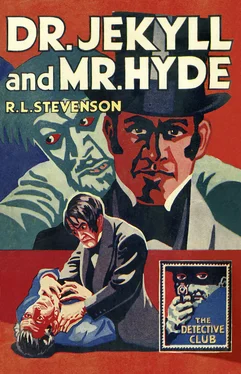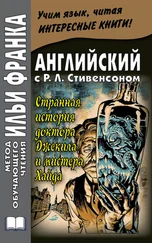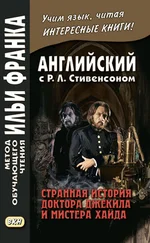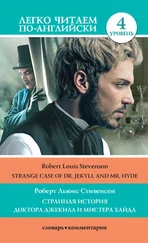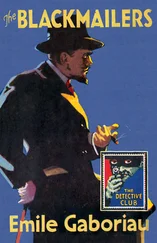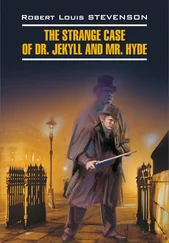Three of Stevenson’s other outstanding short stories written around the same time, ‘Thrawn Janet’, ‘Markheim’ and ‘Olalla’, all appeared in his collection The Merry Men and Other Tales and Fables (1887). ‘Thrawn Janet’ (1881), Stevenson’s very own favourite, is a tale of satanic possession, told in Scots vernacular; the ghostly stranger in ‘Markheim’ (1884) is revealed to be a murderer’s good conscience, an important step toward the ‘Jekyll and Hyde’ allegory; and ‘Olalla’ (1885) is another memorable story of a diseased mind.
After travelling to California where he married Fanny Osbourne, the couple returned to Europe, eventually settling at Bournemouth in 1884 for three years. Stevenson continued to write for many periodicals and produced a long line of successful books including travelogues, essays, two collections of New Arabian Nights (1882/1885), Treasure Island (1883) and A Child’s Garden of Verses (1885).
The original draft of Jekyll and Hyde was written at great speed in three days (after a series of vivid nightmares) at Bournemouth in 1885. Stevenson then allegedly burned the manuscript and rewrote it in another three days after his wife objected that he had omitted the vital allegory. Relating the unique scientific experiments and confession of Henry Jekyll, a successful London physician, the story is told from the oblique perspective of his friend Dr. Hastie Lanyon, his lawyer Gabriel John Utterson, and Utterson’s cousin Richard Enfield.
In fairy tales and classical mythology, people often metamorphose into beasts and back again, but it was Stevenson who first conceived the process by which one human being turns into another, both spiritually and physically. His Victorian readers were fascinated by the idea of the total incarnation of a good man’s evil subconscious into a Caliban figure. Through the portrayal of Jekyll suffering from the suppression of his natural instincts, Stevenson was attacking the rampant hypocrisy of highly respectable and upright Christian ‘ideal husbands’ who led double lives.
Stevenson had examined this theme in his early play, Deacon Brodie; or The Double Life (1880; co-written with his friend W. E. Henley), based on the infamous exploits of a highly esteemed Edinburgh dignitary who headed a gang of thieves and murderers in the 1780s, and was later hanged for his crimes. Although Stevenson’s story is set in London, it remains very close to the atmosphere of Edinburgh.
The first edition of Strange Case of Dr. Jekyll and Mr. Hyde was originally scheduled to appear at Christmas 1885, but was then postponed for two weeks with the date in every copy amended by ink to ‘1886’. It was published at the cheap price of one shilling (perfectly fitting the popular ‘shilling shocker’ format) by Longmans, who felt it was a work that should be within everyone’s reach.
In a matter of months, over 40,000 copies were reportedly sold, and there were several simultaneous editions in America. The story was widely used as a parable and moral text in pulpits throughout the land, and made the subject of leading articles in religious newspapers. One eminent critic, J. A. Symonds, wrote: ‘I do not know whether anyone has the right to scrutinise the abysmal depths of personality, but the art is burning and intense.’
Jekyll and Hyde was dramatised on the stage in 1887 by T. R. Sullivan, and Richard Mansfield made a very successful career in the dual roles, notably during 1888, coinciding with the ‘Jack the Ripper’ murders in London. The most successful and powerful early screen performers of Jekyll and Hyde were John Barrymore (1921), Fredric March (1931; Best Actor Academy Award), and Spencer Tracy (1941).
In many ways, Stevenson’s The Master of Ballantrae (1889) is an equally spine-chilling novel, another evocative story of dual personalities, with the two Durie brothers standing for love and hate, good and evil. Henry, the kind brother, is gradually drained of his goodness by James, the incarnation of fascinating evil. As with the earlier story, Hyde conquers Jekyll.
In search of relief for his poor health, Stevenson sailed with Fanny to America and the Pacific Ocean, and settled in Samoa in 1890, where he died four years later on 3 December 1894, leaving a great legacy of literary works which have remained in print ever since.
After 1886 there were several unsatisfactory attempts to explain the Jekyll and Hyde mystery by various unknown or anonymous writers, which are best forgotten. A very early example was The Untold Sequel of the Strange Case of Dr. Jekyll and Mr. Hyde which claimed, very unconvincingly, that Henry Jekyll and Edward Hyde were really two different men, with no metamorphosis involved. It was published in 1890 by Pinckney in Boston without an author byline, with readers presumably thinking that their fifteen cents were buying a sequel by Stevenson himself. The story was subsequently catalogued as having been written by one Francis H. Little, and one assumes that Stevenson never knew about it.
Various pastiches written during the twentieth century have often been more successful. One of the best examples is ‘Dr Jekyl’, a tale by the American author Robert J. McLaughlin, in which the case is solved by Arnold Stone, a detective of Holmes/Poirot-like ingenuity. In spite of the title, ‘Dr Jekyl’ is a story of a mysterious dual identity which recalls Stevenson’s The Master of Ballantrae with the return of a long-lost prodigal brother. ‘Dr Jekyl’ originally appeared with three other Arnold Stone mysteries in McLaughlin’s collection A Horsehair Santa Claus , published by Christopher in Boston in 1931.
Dr. Jekyll and Mr. Hyde (dropping Strange Case of from its title) joined the ranks of the burgeoning Collins Pocket Classics in the 1920s as number 276 in the series, priced two shillings and with illustrations by Frank Gillet. An unillustrated sixpenny edition followed in September 1929, one of the first dozen titles in the new Detective Story Club imprint, with an essay by John Inglisham to help bulk up the slim volume.
Robert Louis Stevenson has always been loved and admired by countless readers and critics for ‘the excitement, the fierce joy, the delight in strangeness, the pleasure in deep and dark adventures’ found in his classic stories and, without doubt, he created some of the most horribly unforgettable characters in literature: Long John Silver, Ebenezer Balfour, James Durie of Ballantrae and, above all, Mr. Edward Hyde.
RICHARD DALBY
July 2015
STRANGE CASE OF DR. JEKYLL AND MR. HYDE
TO
KATHARINE DE MATTOS
It’s ill to loose the bands that God decreed to bind;
Still will we be the children of the heather and the wind.
Far away from home, O it’s still for you and me
That the broom is blowing bonnie in the north countrie.
CHAPTER I
STORY OF THE DOOR
MR. UTTERSON the lawyer was a man of a rugged countenance, that was never lighted by a smile; cold, scanty and embarrassed in discourse; backward in sentiment; lean, long, dusty, dreary, and yet somehow lovable. At friendly meetings, and when the wine was to his taste, something eminently human beaconed from his eye; something indeed which never found its way into his talk, but which spoke not only in these silent symbols of the after-dinner face, but more often and loudly in the acts of his life. He was austere with himself; drank gin when he was alone, to mortify a taste for vintages; and though he enjoyed the theatre, had not crossed the doors of one for twenty years. But he had an approved tolerance for others; sometimes wondering, almost with envy, at the high pressure of spirits involved in their misdeeds; and in any extremity inclined to help rather than to reprove. ‘I incline to Cain’s heresy,’ he used to say quaintly: ‘I let my brother go to the devil in his own way.’ In this character, it was frequently his fortune to be the last reputable acquaintance and the last good influence in the lives of down-going men. And to such as these, so long as they came about his chambers, he never marked a shade of change in his demeanour.
Читать дальше
